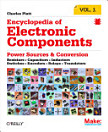Fundamentals of Optical Fiber Sensors
আগ ২০১২ · John Wiley & Sons
ই-বুক
496
পৃষ্ঠা
reportরেটিং ও রিভিউ যাচাই করা হয়নি আরও জানুন
এই ই-বুকের বিষয়ে
This book describes the latest development in optical fiber devices, and their applications to sensor technology. Optical fiber sensors, an important application of the optical fiber, have experienced fast development, and attracted wide attentions in basic science as well as in practical applications. Sensing is often likened to human sense organs. Optical fiber can not only transport information acquired by sensors at high speed and large volume, but also can play the roles of sensing element itself. Compared with electric and other types of sensors, fiber sensor technology has unique merits. It has advantages over conventional bulky optic sensors, such as combination of sensing and signal transportation, smaller size, and possibility of building distributed systems. Fiber sensor technology has been used in various areas of industry, transportation, communication, security and defense, as well as daily life. Its importance has been growing with the advancement of the technology and the expansion of the scope of its application, a growth this book fully describes.
লেখক সম্পর্কে
ZUJIE FANG is a Professor at the Shanghai Institute of Optics and Fine Mechanics, Chinese Academy of Sciences.
KEN K. CHIN is a Professor of Physics at the New Jersey Institute of Technology. His research interests include infrared imaging sensing and device physics.
RONGHUI QU is a Professor at the Shanghai Institute of Optics and Fine Mechanics, Chinese Academy of Sciences.
HAIWEN CAI is a Professor at the Shanghai Institute of Optics and Fine Mechanics, Chinese Academy of Sciences.
ই-বুকে রেটিং দিন
আপনার মতামত জানান।
পঠন তথ্য
স্মার্টফোন এবং ট্যাবলেট
Android এবং iPad/iPhone এর জন্য Google Play বই অ্যাপ ইনস্টল করুন। এটি আপনার অ্যাকাউন্টের সাথে অটোমেটিক সিঙ্ক হয় ও আপনি অনলাইন বা অফলাইন যাই থাকুন না কেন আপনাকে পড়তে দেয়।
ল্যাপটপ ও কম্পিউটার
Google Play থেকে কেনা অডিওবুক আপনি কম্পিউটারের ওয়েব ব্রাউজারে শুনতে পারেন।
eReader এবং অন্যান্য ডিভাইস
Kobo eReaders-এর মতো e-ink ডিভাইসে পড়তে, আপনাকে একটি ফাইল ডাউনলোড ও আপনার ডিভাইসে ট্রান্সফার করতে হবে। ব্যবহারকারীর উদ্দেশ্যে তৈরি সহায়তা কেন্দ্রতে দেওয়া নির্দেশাবলী অনুসরণ করে যেসব eReader-এ ফাইল পড়া যাবে সেখানে ট্রান্সফার করুন।




